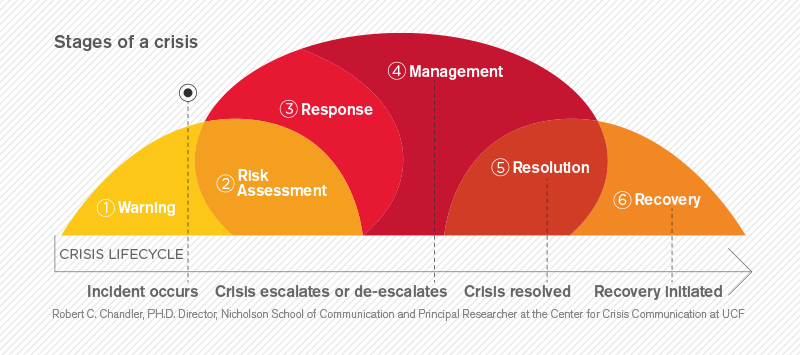Set up a daily meeting
In acute crisis mode, teams are in rapid risk assessment and response. To minimize misinformation and support proactivity, poise and pace, ELTs should move to a standing daily meeting. Agenda of the meetings should focus on surfacing risks and needs, agreeing actions, and aligning on communications.
Signal a conscious shift into a different team operating mode
Effective teams will have a set cadence for how they operate which includes rhythms for how they collaborate, align and decide together. Yet, first responders have well-trained protocols for transfer of control when in acute crisis [60 Minutes Interview]. Even the most high-performing teams can devolve quickly if they don’t have a conscious and agreed shift in how they work together aligned to their newly emergent purpose. Meet the moment.
Align on the newly formed key priorities
Crises of the magnitude of COVID-19 shift your business strategy and plan quickly. The purpose of the ELT will shift instantly when facing an acute crisis. Teams and organizations can’t operate at optimal effectiveness in the absence of clearly outlined priorities and goals. In the wake of a crisis, the previously agreed markers are likely no longer the most relevant or pressing priorities. ELTs that anchor their work, their communications, and their organization in these new points of focus will fare significantly better.
Be clear on decision responsibilities
Following on from first responder training, have clear points of accountability and ownership on key areas. Be clear on who owns which decisions. Watch out for assumptions based on ‘business as usual’ roles – accountabilities usually shift in a crisis, and require new delineations.
Leave space for the team to support each other
Leadership is often a lonely place. Each leader on the ELT will be harboring his or her own worries and fears, whilst also holding the stress and fears of an entire organization. Each member of the team will need a psychologically safe space where he or she can share, and unload and process concerns – in the service of showing up as an authentic yet poised leader. Lead by example and share your own thoughts, concerns, and hopes. Practically, adding check ins and check outs to meetings helps to bookmark space. Normalize the stress curve. Provide resources to everyone who would like to process with a professional.
Be generous with each other
Crises bring out stress behaviors in everyone, including senior leaders. Some individuals naturally rise to the challenge of a crisis and more easily and effectively leverage their resilience behaviors. Others are more easily derailed. Recognize that the range of responses is normal and find ways to learn from each other. Know what your derailers are under stress, and recognize that your colleagues will also likely be exhibiting their stress behaviors. Instead of analyzing and judging these tendencies, normalize them. Offer support when your teammates’ edges come out. If they are displaying disruptive behaviors it is because they are well beyond their stress threshold. Give people permission to sit out a leg of the race if they are feeling too depleted. Similarly, observe individuals who appear to be managing well – to check what support they need as it may be less obvious. Also, ask them to share their positive strategies with others.
Communicate often
Ambiguity is an accelerant to anxiety. And, anxiety is highly contagious. Its best remedy is clarity and transparency. Even if the ELT doesn’t have answers to all or even most questions, sharing a daily communication about what decisions have been made, which questions are under consideration, and what resources are available will help to keep anxiety in check so the organization can focus on the hard work ahead of it.
Create communities
Crises bring out the best and worst in human behavior. Don’t miss opportunities to create strong communities of support. Some ideas for the COVID-19 crisis include: “Parenting while working. In local teams, you can do virtual happy hours. In global teams, you can pick a time where one country brings breakfast, whilst others bring lunch.
Focus – resist the temptation to solve every problem
It will feel like endless fires to fight, daily. Be clear on what core issues the ELT should focus on. Decision and crisis fatigue will inevitably set in. Remember the impact of chronic stress on the brain and body. Re-focusing people on what is most Important will help to stave off these fatigue factors and to optimize the ELT’s effectiveness.
Document the learnings in real time
Crisis necessitates operating in an action mode. Observations and ideas regarding what we missed, what we could have done better, how we prepare next time, etc will inevitably emerge. Document everything. Have a team EA record minutes and capture insights to digest and translate into lessons learned. However, avoid getting distracted in acute crisis mode by efforts to fully process and understand the lessons. Be disciplined and focused. And implement a process to ensure your team will capture and return to key insights.

